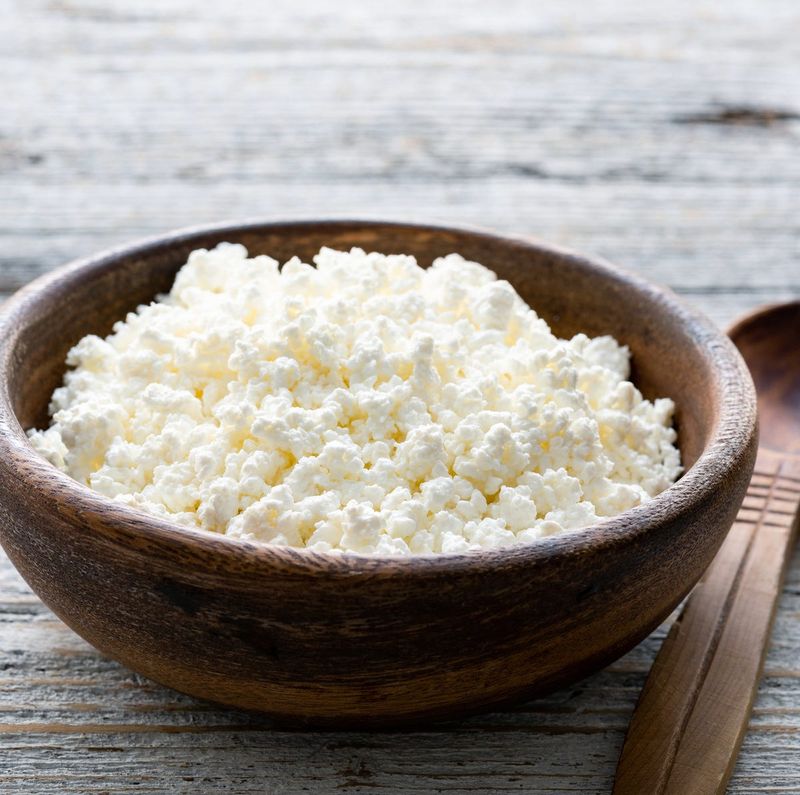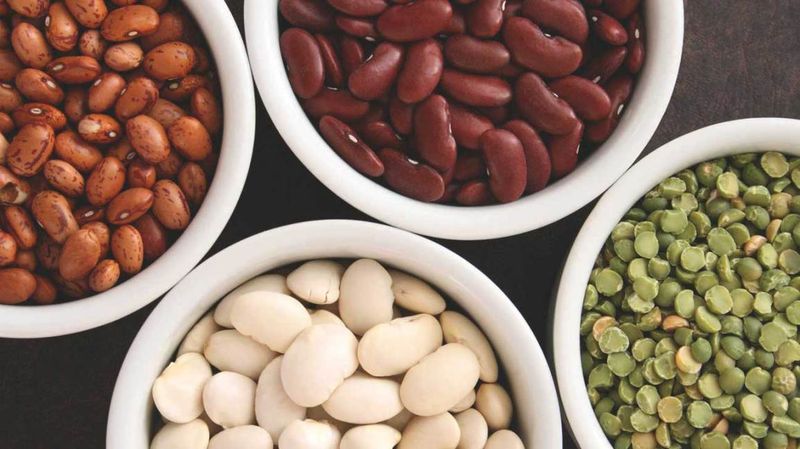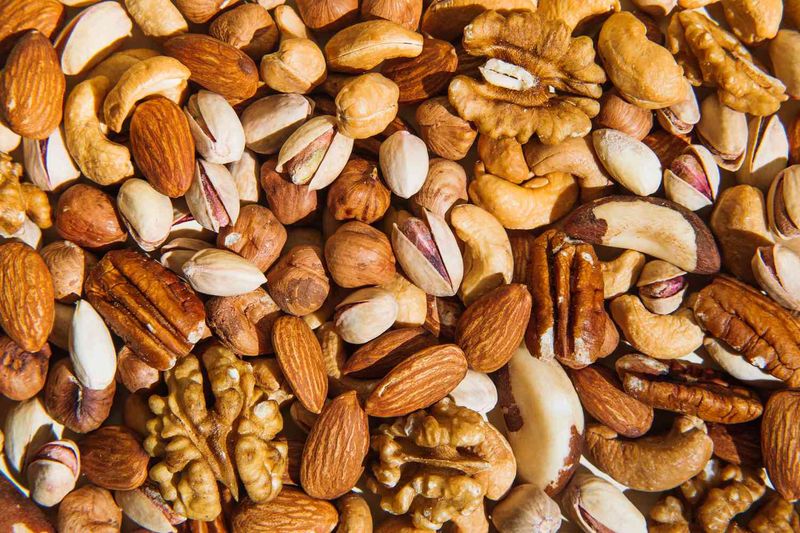If you’ve ever wished your body would burn calories faster—while you’re working, sleeping, or even just lounging—your metabolism is the engine you need to rev up. And while exercise and genetics play big roles, what’s on your plate can have just as much impact. In fact, science shows that certain high-protein foods can kick your metabolism into high gear, helping your body torch more calories throughout the day—even at rest.
But here’s the twist: not all protein-packed bites are created equal. Some speed things up, while others, surprisingly, may be dragging your metabolism down without you even realizing it. It’s not just about quantity—it’s about quality, timing, and what’s paired on your plate. And with misinformation constantly swirling around trendy diets and quick-fix fads, separating fact from food fiction can feel impossible.
That’s why we turned to nutritionists, registered dietitians, and peer-reviewed studies to uncover the real deal. The result? A list of eight superstar protein foods scientifically shown to fuel fat burning, increase satiety, and support lean muscle—along with four seemingly harmless options that might actually be slowing your metabolic roll. So whether you’re looking to slim down, build muscle, or simply feel more energized from morning to night, knowing which foods to prioritize (and which to cut back on) could be the game-changer you’ve been looking for.
Your metabolism isn’t set in stone—it responds to the choices you make every day. And these expert-backed picks will help you make smarter ones. Ready to eat your way to better metabolism? Let’s dive into the 8 powerhouse proteins that could change how your body burns fuel—plus the 4 sneaky culprits that may be quietly hitting the brakes.
1. Eggs

Every single egg delivers a complete protein source containing all nine essential amino acids your body needs but can’t make on its own. Your digestive system works harder to process protein than carbs or fat, creating a metabolism-boosting effect called thermal energy.
The protein in eggs helps maintain muscle mass, which naturally burns more calories than fat tissue—even when you’re just sitting around! Morning egg-eaters often report feeling fuller longer than those who choose carb-heavy breakfasts.
The yolk contains valuable nutrients like vitamin D and choline that support overall metabolic health, so don’t just stick to whites. For maximum benefits, pair eggs with fiber-rich vegetables to create a metabolism-friendly meal.
2. Greek Yogurt

Unlike regular yogurt, Greek varieties undergo an extra straining process that removes whey, creating a thicker texture and doubling the protein content. A single cup typically packs 15-20 grams of protein—similar to what you’d get from a small chicken breast!
The probiotics in Greek yogurt support gut health, which scientists now recognize as crucial for proper metabolism function. These friendly bacteria help break down food more efficiently and may improve how your body processes nutrients.
Many people experience fewer hunger pangs after eating Greek yogurt compared to other snacks. Try adding cinnamon, which contains compounds that may further enhance metabolic function, for a delicious metabolism-boosting treat.
3. Cottage Cheese

Casein protein makes cottage cheese particularly special for metabolism support. This slow-digesting protein provides a steady release of amino acids that keeps your metabolism active for hours—perfect for overnight recovery when eaten before bed.
Athletes have long treasured cottage cheese for its ability to prevent muscle breakdown during sleep. With roughly 24 grams of protein per cup and minimal carbs, it’s one of the most protein-dense foods available. The calcium content in cottage cheese plays a double role by supporting bone health and potentially increasing fat burning. For flavor variety without added sugar, try mixing in fresh herbs, cucumber slices, or a sprinkle of black pepper to keep this metabolism helper interesting.
4. Lean Meats

Skinless chicken breast and turkey contain some of the leanest, highest-quality protein available, with about 25 grams per 3-ounce serving. Your body expends significant energy—up to 30% of the calories consumed—just digesting and processing this protein.
The amino acid profile in poultry supports muscle tissue maintenance and growth. Since muscle burns more calories than fat (even at rest), preserving lean mass keeps your metabolic rate naturally higher throughout life.
B vitamins abundant in lean meats serve as essential cofactors for metabolic reactions. Cooking methods matter too—grilling, baking, or air-frying preserves the metabolism-friendly nature of these proteins, while deep-frying creates the opposite effect.
5. Fish

Fatty fish like salmon and tuna offer a unique combination of high-quality protein and omega-3 fatty acids that work together to optimize metabolism. These healthy fats activate genes that stimulate fat-burning and reduce fat storage, particularly in the abdominal area.
The anti-inflammatory properties of omega-3s help combat metabolic inflammation—a condition that can slow down your metabolism and lead to insulin resistance. Research suggests regular fish consumption may help maintain sensitivity to leptin, a hormone that regulates hunger and metabolic rate.
Wild-caught varieties typically contain higher levels of metabolism-friendly nutrients than farm-raised options. Even canned tuna provides these benefits, making it an affordable way to boost metabolism without breaking your budget.
6. Legumes

Lentils, chickpeas, and black beans deliver a powerful one-two punch of protein and fiber that keeps your metabolism running smoothly. A single cup provides around 15 grams of protein alongside 15 grams of fiber—a combination that prevents blood sugar spikes that can disrupt metabolic function.
The resistant starch in legumes feeds beneficial gut bacteria, producing short-chain fatty acids that may improve metabolic health. These compounds help regulate insulin sensitivity and may increase fat oxidation.
Plant proteins require more energy to digest than animal proteins, creating a slightly higher thermic effect. The iron content in legumes supports oxygen transport throughout your body, essential for the cellular metabolism that burns calories during both activity and rest.
7. Nuts and Seeds

Almonds, walnuts, chia seeds, and flaxseeds pack impressive protein alongside fiber and healthy fats that support metabolic health. The protein-fat combination requires significant energy to digest, temporarily boosting your calorie burn after eating.
Magnesium—abundant in most nuts and seeds—plays a critical role in over 300 enzymatic reactions related to metabolism. Studies show magnesium-deficient diets may contribute to metabolic slowdown and insulin resistance.
Despite their calorie density, research consistently shows that regular nut consumers tend to maintain healthier weights. The satisfying combination of protein, fat, and fiber helps regulate appetite hormones, preventing overeating later in the day—just watch portion sizes, as a small handful (about 1 ounce) provides all these benefits.
8. Soy Products

Tofu, tempeh, and edamame provide complete plant protein containing all essential amino acids—rare in the plant kingdom. This protein quality helps preserve lean muscle mass that keeps your metabolic rate elevated, even during weight loss.
The isoflavones in soy may offer unique metabolic benefits. Research suggests these compounds can support thyroid function (your body’s metabolic regulator) when consumed in moderate amounts. Fermented soy products like tempeh contain probiotics that support gut health and metabolic function.
For those concerned about soy, research shows moderate consumption (1-2 servings daily) provides metabolic benefits without hormonal concerns for most people. Try adding cubed tofu to stir-fries or crumbled tempeh to salads for an easy metabolism boost.
1. Sugary Beverages

That innocent-looking soda or sweetened iced tea can deliver a whopping 40 grams of sugar—equivalent to 10 teaspoons—without triggering fullness signals in your brain. The resulting insulin spike not only encourages fat storage but also interferes with leptin, your body’s primary metabolism-regulating hormone.
Liquid calories bypass many digestive steps that solid foods require, minimizing the thermic effect that normally gives metabolism a small boost after eating. Regular consumption has been linked to decreased mitochondrial function—these cellular powerhouses are responsible for turning food into energy.
Even diet versions with artificial sweeteners may disrupt gut bacteria balance and metabolic signaling. Replace these metabolism-slowers with water, unsweetened tea, or coffee to support rather than sabotage your metabolic health.
2. Refined Carbohydrates

White bread, pastries, and other refined carbs have had their fiber stripped away, causing them to digest rapidly and spike blood sugar. This triggers insulin release that not only encourages fat storage but can eventually lead to insulin resistance—a condition where metabolism naturally slows.
The minimal fiber content means your digestive system does little work processing these foods. Digestion itself burns calories, so foods requiring less digestive effort contribute less to your daily energy expenditure. These quick-energy foods create energy crashes that often lead to cravings and overeating.
The lack of nutrients means your body may continue feeling hungry despite consuming calories, as it searches for the vitamins and minerals needed for metabolic processes. Choose whole grain alternatives that provide slower-burning fuel for your metabolic engine.
3. Fried Foods

The high-temperature cooking process used for fried foods creates compounds called advanced glycation end products (AGEs) that promote inflammation throughout the body. This chronic inflammation interferes with insulin signaling and can directly slow metabolic function.
Trans fats and oxidized oils commonly found in fried items disrupt cell membrane function, including the mitochondria where metabolism occurs. Studies show these fats may decrease the activity of enzymes involved in fat metabolism by up to 50% compared to healthier fats.
Your digestive system struggles to process the heavy fat load, often leading to sluggishness and reduced energy expenditure after eating. Air-fried alternatives or oven-baking with a light oil spray can provide similar textures without the metabolism-hampering effects of traditional deep-frying.
4. Highly Processed Foods

Ultra-processed foods—think packaged snacks, frozen meals, and fast food—contain artificial ingredients your body doesn’t recognize. These foreign substances can confuse metabolic pathways and hormone signals that regulate hunger and calorie burning.
The combination of refined carbs, unhealthy fats, and minimal fiber creates the perfect storm for metabolic disruption. Research shows people eating highly processed diets burn fewer calories during digestion compared to those eating whole foods.
Many additives like artificial colors, flavors, and preservatives may alter gut bacteria composition, which plays a crucial role in metabolism regulation. Studies have found that even identical calorie amounts from processed versus whole foods lead to different metabolic responses—with processed foods promoting greater fat storage and slower metabolism.
Leave a comment